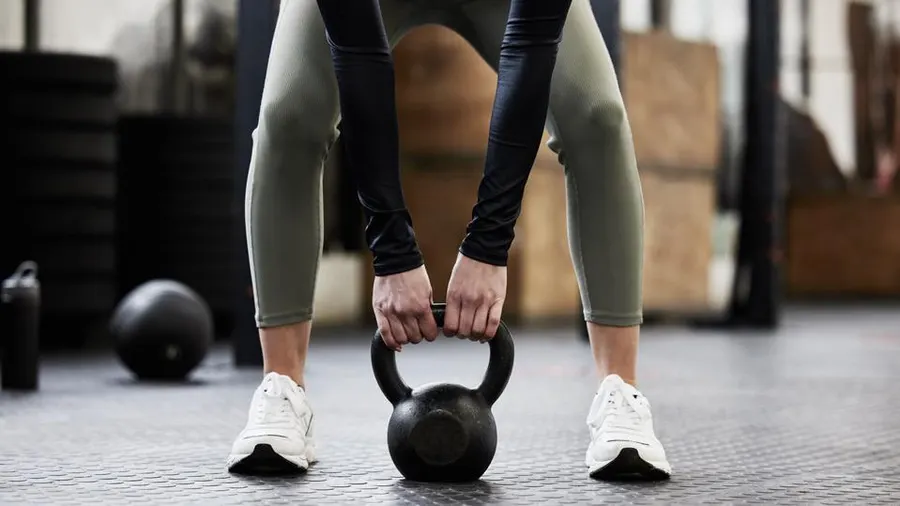Ready to crush your weight loss goals? This blog has got your back with the top 8 exercises to make it happen. Here we will share some workouts that really work. Whether you’re a workout newbie or a gym pro, these exercises are here to make sweating fun and help you shed those extra pounds. Lace up those sneakers, let’s get started!

Contents
8 Best Exercises for Weight Loss
When it comes to losing weight, incorporating exercise into your routine is essential. But what are the best exercises for weight loss? Below, we’ve compiled a list of 8 exercises that can help you shed those extra pounds and achieve your weight loss goals.
- High-Intensity Interval Training (HIIT): HIIT involves alternating between short bursts of intense exercise and brief recovery periods. This type of training has been shown to effectively burn calories and fat, even after your workout is over.
- Resistance Training: Including resistance training in your workouts helps build lean muscle mass, which boosts your metabolism and helps you burn more calories throughout the day. Incorporate exercises like squats, lunges, bicep curls, and push-ups for optimal results.
- Cardiovascular Exercise: Activities like running, cycling, swimming, and dancing are great for cardiovascular health and weight loss. Aim for at least 150 minutes of moderate-intensity aerobic exercise or 75 minutes of vigorous-intensity aerobic exercise per week.
- Interval Training: Similar to HIIT, interval training involves alternating between high-intensity exercises and lower-intensity recovery periods. It’s an effective way to burn calories and improve endurance.
- Circuit Training: Circuit training involves a series of exercises performed consecutively with minimal rest in between. By combining strength exercises with cardiovascular movements, you can maximize calorie burn and improve overall fitness.
- Walking: Don’t underestimate the power of walking! Brisk walking is a low-impact activity that can be done anywhere and is accessible to people of all fitness levels. Aim for at least 30 minutes of brisk walking most days of the week.
- Swimming: Swimming is a great full-body workout that is easy on the joints. It engages multiple muscle groups and can help burn a significant amount of calories.
- Yoga: Besides promoting flexibility and relaxation, yoga can be an effective tool for weight loss. Certain styles of yoga, like power yoga and vinyasa flow, can provide a cardiovascular workout while also strengthening and toning your muscles.
Do I have to exercise to lose weight?
When it comes to losing weight, many people wonder if exercise is necessary. The short answer is no, you don’t have to exercise to lose weight. Weight loss primarily depends on creating a calorie deficit, which means consuming fewer calories than you burn. This can be achieved through a combination of dietary changes and physical activity.

However, it’s important to note that exercise offers numerous benefits beyond weight loss. Regular exercise can improve your overall health, boost your mood, increase energy levels, and reduce the risk of chronic diseases. It also plays a crucial role in maintaining muscle mass while losing weight.
While it’s possible to lose weight without exercise, incorporating physical activity into your routine can enhance your weight-loss efforts. Exercise can help increase your daily calorie burn, making it easier to create a calorie deficit. It also helps preserve lean muscle mass, which is important for maintaining a healthy metabolism.
To maximize weight loss, focus on a combination of cardiovascular exercise and strength training. Cardiovascular exercises like jogging, cycling, or swimming can help burn calories and improve cardiovascular health. Strength training exercises, such as lifting weights or bodyweight exercises, can help build muscle, increase metabolism, and improve body composition.
How much weight can you expect to lose from exercise?
When it comes to weight loss, it’s essential to manage your expectations and understand that the amount of weight you can lose from exercise depends on several factors. Here are the key considerations to keep in mind:

- Starting Weight: Your initial weight plays a role in how much weight you can expect to lose through exercise. Those with a higher starting weight typically have a higher basal metabolic rate (BMR), helping them burn more calories during both activity and rest.
- Age: Age can influence weight loss efforts. Older individuals tend to have a higher fat-to-muscle ratio and a lower BMR, which can make it more challenging to shed pounds.
- Sex: Biological sex can impact weight loss rates. People assigned male at birth (AMAB) often have a higher muscle-to-fat ratio compared to those assigned female at birth (AFAB), resulting in potentially faster weight loss even with a similar calorie intake.
- Diet: Your diet plays a significant role in weight loss. To shed pounds, you need to create a calorie deficit by burning more calories than you consume.
- Sleep: Sufficient sleep is crucial for weight loss. Lack of sleep can slow down your weight loss rate and increase cravings for high-calorie foods.
- Medical Conditions: Certain medical conditions can affect weight loss efforts. It’s essential to consult with a healthcare professional to understand any potential impacts on your progress.
Frequently Asked Questions
Is working out 30 minutes a day enough to lose weight?
Exercising for 30 minutes a day can contribute to weight loss. However, the amount of weight you can lose depends on various factors such as diet, starting weight, and individual metabolism.
What burns fat the fastest?
Cardio exercises, such as running, cycling, and swimming, can help burn fat quickly by increasing heart rate and calorie expenditure.

Hello, I’m Ravindra. Over the years, I’ve immersed myself deeply into the world of fitness and health, transforming both my body and mind. Writing has allowed me to share my journey, insights, and expertise with those just starting out and seasoned fitness enthusiasts alike. Beyond just routines and diets, I believe in inspiring others to adopt a holistic approach to well-being.
